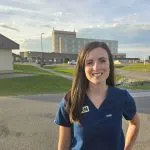
New air tanker on the way as wildfire season begins
This year’s wildfire season is expected to be fairly normal, said the Saskatchewan Public Safety Agency in a news conference this morning, but the agency is prepared for the worst with the first of four new air tankers arriving in weeks.
Most of the SPSA’s wildfire suppression equipment is in Prince Albert and northern Saskatchewan so the air tanker will make its way to the Prince Albert airbase.
“We look to receive the first of those four air tankers likely next month. It will go into training with our staff and then become operational throughout the summer, making sure that our crews are well versed in using this aircraft as the second, third and fourth come online between now and 2027,” said Steve Roberts, VP of operations for the SPSA.
With northern communities that are located in the boreal forest, evacuations and fire suppression are major concerns every summer.


